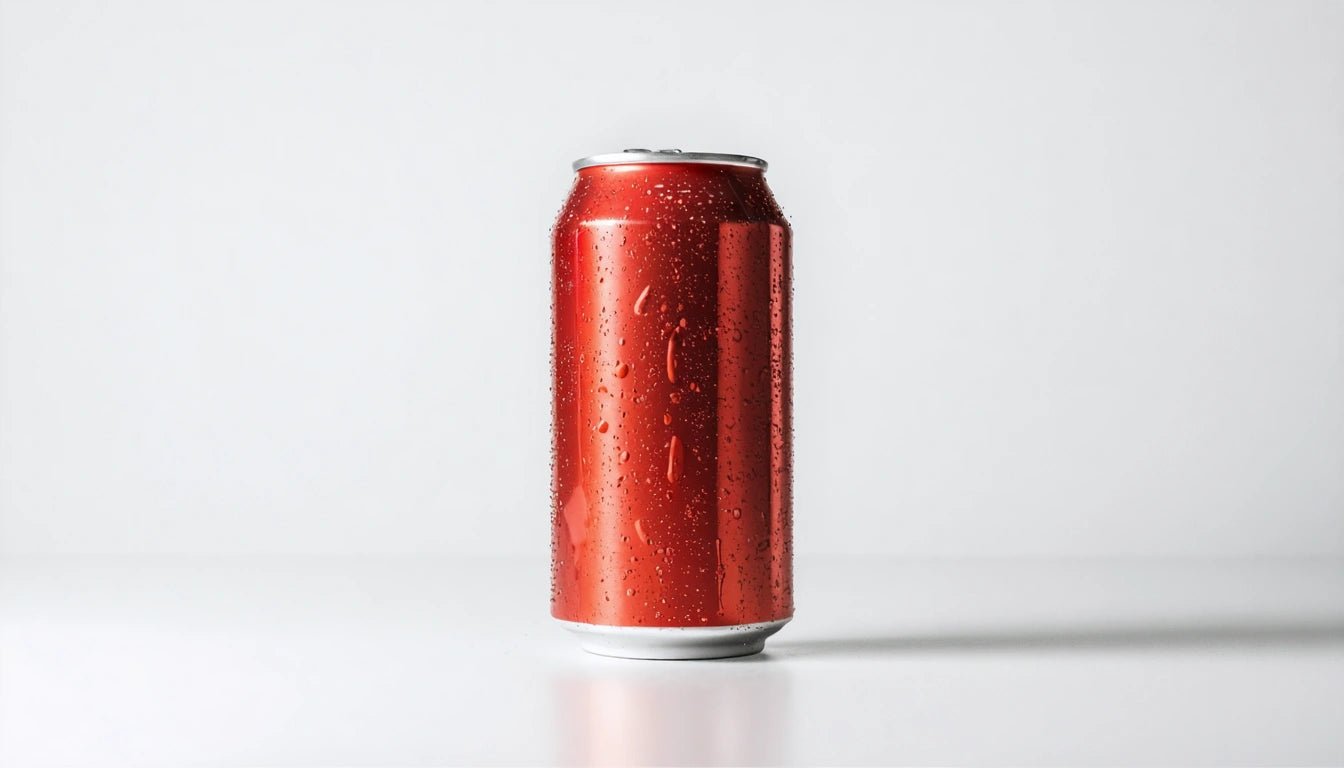Table of Contents
Understanding the Dimensions of a Standard Pop Can
When asking "how big is a pop can," most people are referring to the ubiquitous 12-ounce aluminum container found in vending machines, grocery stores, and refrigerators worldwide. These standardized containers have precise dimensions that have been optimized through decades of engineering to balance material usage, structural integrity, and consumer convenience.
Standard Dimensions of a Pop Can
A standard 12-ounce pop can in North America has specific measurements that have become the industry norm:
- Height: 4.83 inches (122.68 mm)
- Diameter at widest point: 2.6 inches (66 mm)
- Diameter at narrowest point (top): 2.13 inches (54 mm)
- Empty weight: Approximately 14.9 grams (0.5 ounces)
These dimensions answer the common question of how tall is a pop can while providing context for its overall size profile. The slightly tapered design, narrower at the top than at the base, serves both functional and aesthetic purposes.
Volume and Capacity Measurements
The standard pop can holds 12 fluid ounces or 355 milliliters of liquid. This volume has become the industry benchmark, though variations exist:
- 12 fl oz (355 ml) - Standard size in North America
- 330 ml - Common in Europe and parts of Asia
- 375 ml - Standard in Australia
Understanding how many ounces are in a can of pop helps consumers make informed choices about portion sizes and consumption. The 12-ounce standard has remained relatively consistent since the 1960s, though mini cans (7.5 oz) and larger formats (16 oz) have gained popularity in recent years.
Design Features and Engineering
The modern pop can incorporates several ingenious design elements:
The Concave Base
The bottom of a standard can features a dome-shaped concave design. This structural element allows the can to withstand the internal pressure of carbonated beverages (approximately 50 psi or 345 kPa) while using minimal aluminum.
The Pull Tab
Modern cans feature a stay-on tab mechanism that revolutionized the industry in the 1970s, replacing the earlier detachable pull tabs that created litter problems. This engineering solution maintains the can's structural integrity while providing easy access to the contents.
For a deeper understanding of can specifications, this guide to can dimensions provides additional context on how these containers are engineered.
Manufacturing Process and Materials
Modern pop cans are primarily made from aluminum alloy 3004 (body) and 5182 (lid). The manufacturing process has been refined to create incredibly thin-walled containers that remain remarkably strong:
- Body wall thickness: approximately 0.097 mm (0.0038 inches)
- Top lid thickness: approximately 0.23 mm (0.009 inches)
- Material efficiency: Today's cans use about 40% less aluminum than cans from the 1970s
The production process involves drawing and ironing (D&I), where a flat disc of aluminum is drawn into a cup shape and then stretched to form the can body. This process creates a seamless container with walls that are thinner than a human hair yet strong enough to withstand significant pressure.
Packaging Considerations and Safety Standards
Beyond basic dimensions, pop cans must meet various safety and regulatory standards. The design must prevent contamination, maintain product integrity, and in some cases, incorporate safety features similar to child-resistant packaging standards that protect against accidental ingestion of harmful substances.
While standard beverage cans don't typically require child-resistant features, the principles of secure containment and consumer safety apply across packaging industries. The standardized dimensions also facilitate efficient transportation, with typical 12-pack configurations designed to maximize space utilization during shipping.
Size Variations and International Standards
While the standard 12-ounce can dominates the market, several variations exist:
- Slim cans: 12 oz volume but taller (approximately 6.125 inches) and narrower (2.1 inches diameter)
- Mini cans: 7.5 oz volume, standing approximately 3.8 inches tall
- Larger formats: 16 oz (473 ml) and 24 oz (710 ml) cans with proportionally larger dimensions
International standards for can dimensions vary slightly by region, though globalization has led to increasing standardization. The European standard 330 ml can is slightly shorter than its American counterpart, while Australian 375 ml cans are marginally taller.
Understanding these dimensions is valuable beyond simple curiosity. For manufacturers, retailers, and consumers alike, the standardized sizing of pop cans represents a remarkable achievement in packaging efficiency, material optimization, and global consistency.
For additional context on fluid measurements and container sizes, this resource on common fluid measurements provides helpful comparisons across different packaging formats.



















